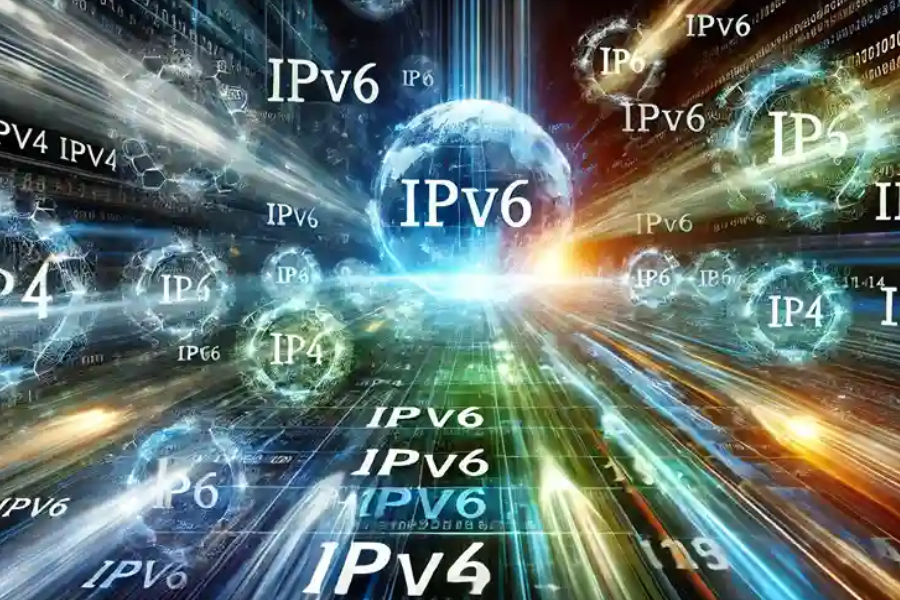IPv6 Addresses: The Case of 2607:fb91:15af:7350::62
In the ever-evolving landscape of internet technology, understanding the structure and significance of IP addresses is crucial. This article delves into the specifics of IPv6 addressing, using the address “2607:fb91:15af:7350::62” as a case study. We will explore what IPv6 addresses are, their components, and the role of specific addresses like the one mentioned.
Introduction to IP Addresses
What is an IP Address?
An IP (Internet Protocol) address is a unique identifier for a device on a network. It serves as a location marker, enabling communication between devices over the internet or a local network. IP addresses come in two versions: IPv4 and IPv6.
IPv4 vs. IPv6
- IPv4: The most commonly used IP version, IPv4 addresses are 32-bit numbers divided into four octets. For example, 192.168.1.1 is an IPv4 address.
- IPv6: With the advent of IPv6, the limitations of IPv4 were addressed. IPv6 addresses are 128-bit numbers, providing a vastly larger address space.
The Structure of IPv6 Addresses
Basic Format
IPv6 addresses are expressed as eight groups of four hexadecimal digits, separated by colons. For instance, an IPv6 address may look like this: 2001:0db8:85a3:0000:0000:8a2e:0370:7334.
Address Compression
To simplify notation, IPv6 allows for address compression:
- Leading Zeros: These can be omitted. For example, 0012 can be written as 12.
- Zero Compression: Consecutive groups of zeroes can be replaced by a double colon (::). However, this can be used only once in an address.
Analyzing the Address: 2607:fb91:15af:7350::62
Breaking Down the Address
The IPv6 address “2607:fb91:15af:7350::62” can be decomposed as follows:
- 2607:fb91:15af:7350: This is the non-compressed part of the address.
- ::: This represents a sequence of zero blocks that have been omitted for simplicity.
- 62: This is the final segment of the address.
Address Breakdown
- 2607:fb91:15af:7350: This part is the network prefix, which identifies the network segment.
- ::: Indicates the presence of one or more consecutive blocks of zeroes.
- 62: This is the interface identifier, which typically represents a specific device within the network.
Address Classification
- Global Unicast Address: “2607:fb91:15af:7350::62” falls under the global unicast category, which is used for routing on the internet.
- Scope: The address is likely used within a specific network segment or organization.
The Role and Importance of IPv6 Addresses
Address Space
IPv6 addresses provide a vastly larger address space compared to IPv4, allowing for an almost infinite number of unique addresses. This expansion is crucial as the number of internet-connected devices continues to grow.
Enhanced Features
- Improved Security: IPv6 includes built-in security features such as IPsec, which enhances the security of data transmissions.
- Efficient Routing: The hierarchical address structure of IPv6 simplifies routing and improves efficiency.
Future-Proofing
As IPv4 addresses become exhausted, IPv6 addresses ensure that the internet can continue to expand without the need for complex workarounds.
Use Cases for IPv6 Addresses
Internet of Things (IoT)
With the proliferation of IoT devices, IPv6’s large address space is essential. Each IoT device needs a unique IP address, and IPv6 accommodates this need effortlessly.
Corporate Networks
Organizations use IPv6 to simplify network management and enhance connectivity. IPv6’s features support advanced networking requirements and security measures.
Potential Challenges and Solutions
Adoption and Transition
- Compatibility: Transitioning from IPv4 to IPv6 can be challenging due to compatibility issues. Dual-stack systems, which support both IPv4 and IPv6, are often used during the transition period.
- Training and Knowledge: Network administrators need to be educated about IPv6 to effectively manage and troubleshoot IPv6 networks.
Security Concerns
While IPv6 includes enhanced security features, new attack vectors may emerge. Regular updates and security practices are essential to mitigate potential risks.
Practical Example: Configuration and Troubleshooting
Configuring an IPv6 Address
To configure an IPv6 address like “2607:fb91:15af:7350::62” on a device, network administrators typically use the following steps:
- Access Network Settings: Navigate to the network configuration settings on the device.
- Enter Address Information: Input the IPv6 address along with the subnet prefix length (usually /64).
- Apply and Test: Save the settings and test connectivity to ensure proper configuration.
Troubleshooting IPv6 Connectivity
- Ping Test: Use the ping command to test connectivity. For instance, ping6 2607:fb91:15af:7350::62 helps verify that the address is reachable.
- Traceroute: The traceroute command helps identify routing paths and potential issues.
Conclusion
The IPv6 address “2607:fb91:15af:7350::62” exemplifies the structure and functionality of IPv6 addressing. As the internet continues to grow, understanding and effectively managing IPv6 addresses becomes increasingly important. With its expanded address space and advanced features, IPv6 is poised to support the future of global connectivity, making it a vital component of modern networking.






